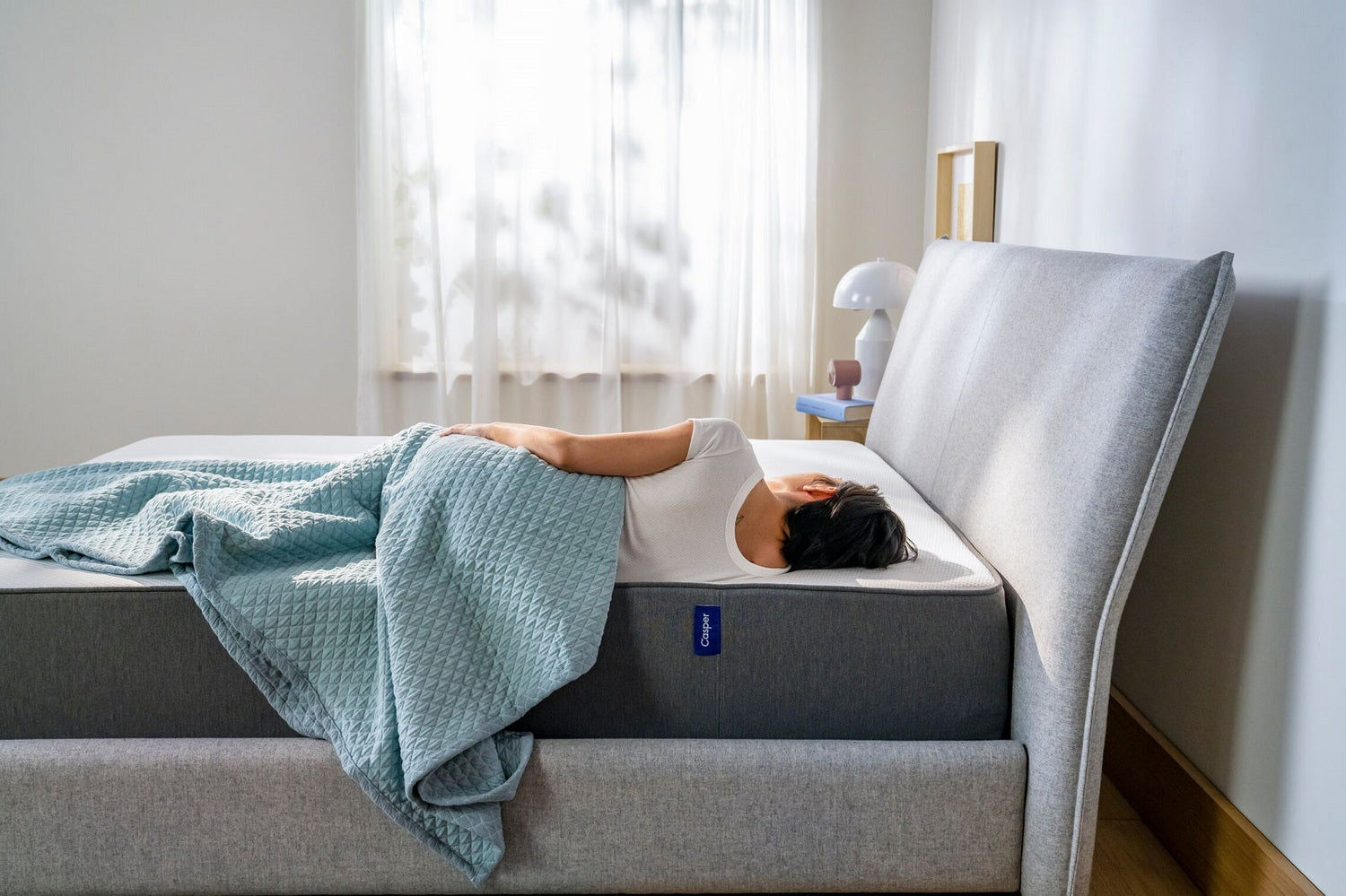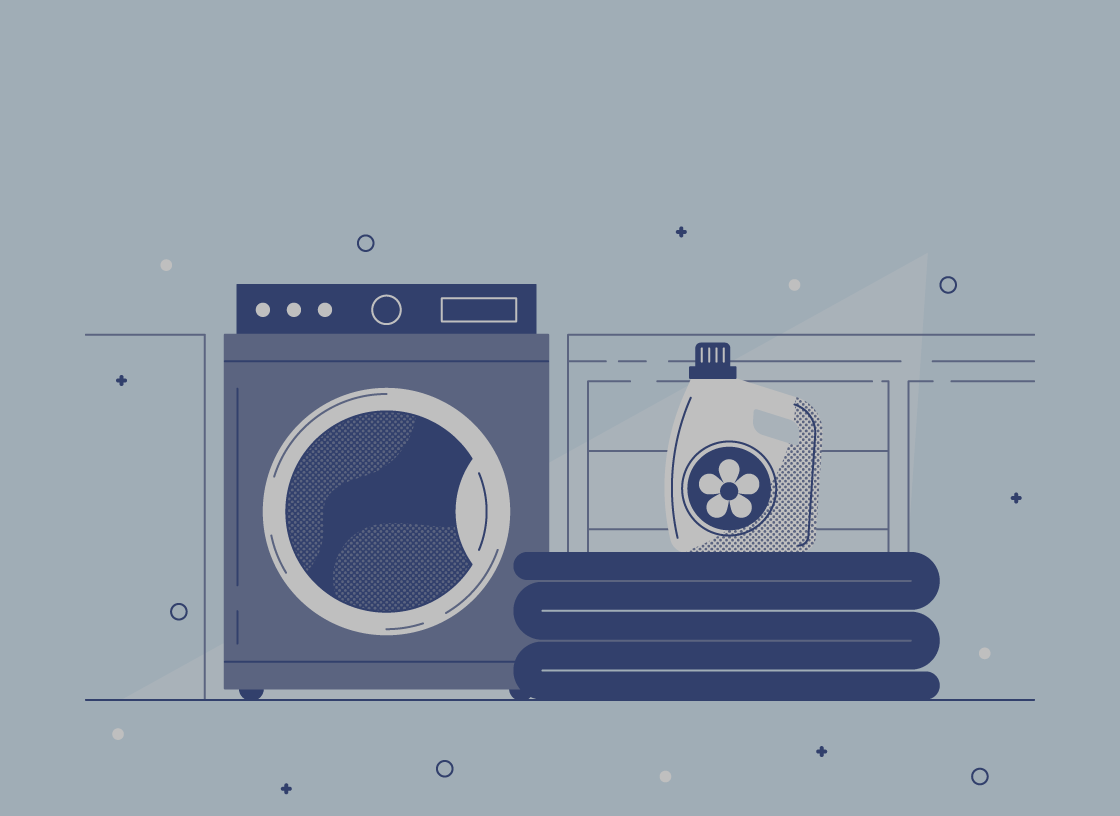From the Dream to the Dream Max, Casper supports side sleepers from every angle.
If you drift off fastest when curled up on your side, you’re not alone. According to a 2017 study, sleepers spend 54% of their time in bed on their sides.1
Side sleeping is also one of the most beneficial sleep positions: It aligns the spine, opens the airways, and may even aid digestion.2 However, this position puts pressure on sensitive areas, including your shoulders and hips. If left unchecked, this pressure can leave you feeling achy and sore come morning.2
To give your side some love at night, you need a mattress that cradles your curves and supports your joints.
You’ve come to the right place — Casper offers ideal sleep solutions for every side sleeper. From the Dream to the Dream Max, discover the mattresses that make your preferred sleep position all the cozier.

Casper Dream
The Dream hybrid mattress seamlessly combines the soft, ache-melting features of foam with firm and supportive spring coils for enhanced spine alignment and pain relief. Let’s peel back the covers to learn how the Dream fulfills every side sleeper’s mattress wishes:
- Two layers of foam – The first layer features our Breathe Flex Foam. Its open cell design allows for easier airflow, keeping you cool all night long. The second layer is our Align Memory Foam, which offers tailored support to every inch of your body.
- Three zones of support – Your body requires different levels of support at night; your shoulders and legs do best with a little give underneath them, while your hips need a firmer base to stay aligned. The Dream perfectly meets these needs with Zoned Support: softer foam at the head and foot of the mattress, and firmer foam in the center.
- Responsive flex coils – The Dream is complete with a core of supportive and springy flex coils. They offer an extra boost of support to your weight-bearing joints — and a satisfying bit of bounce.
This mattress may be called the Dream, but its heavenly support and comfort are no fantasy.

Casper Dream Max
The best Casper mattress for side sleepers is a decade in the making — and it’s finally here. The Dream Max orthopedic mattress ensures even deeper sleep for side sleepers. Here’s how it takes quality rest to the max:
- More zones of support – The Dream Max achieves premium Zoned Support by nestling three foam layers within the Casper Cozy Cover. The result is a whopping seven zones of support featuring precision-cut foam channels that map your unique curves.
- Enhanced breathability – If you find that sleeping on your side traps heat between you and your mattress, you’ll appreciate the ultra-breathable layer of Breathe+ Flex Foam in the Dream Max. It creates an even cooler sleep experience than the Dream, ensuring you stay asleep and wake up feeling refreshed.
- The same ultra-supportive spring core – This hybrid mattress wouldn’t be complete without its responsive flex coil base. The innovative coils isolate motion and enhance the support of the foam layers above.
The Dream Max maximizes everything about traditional hybrid mattresses — including their versatility. You and your partner will both fall in love with the Dream Max, even if you fall asleep in different positions.
What Type of Mattress is Best for Side Sleepers?
Why are the Casper Dream and Dream Max mattresses perfectly suited for side sleepers? They’re both expertly engineered hybrid mattresses.
Hybrid mattresses offer the best of both worlds — support and comfort — ideal for all sleepers, but especially those that favor their sides.
When sleeping on your side, it’s essential to maintain a neutral spinal alignment from your pelvis to your neck. To enhance your side sleeping environment, consider upgrading your pillow, too. Thick therapeutic pillows will help lift your head to relieve pressure and keep it in line with your spine.2

Recommended Mattress Firmness for Side Sleeping
Side sleepers will benefit most from a medium to medium-firm mattress.2
Think about it: Your side needs to support your entire body weight for the whole night. That’s a lot of pressure — both literally and metaphorically. You need a mattress that supports your side right back.
Medium to medium-firm mattresses offer adequate support without sacrificing the coziness your body craves. Learn more about firm vs medium mattresses in our blog.
Recommended Mattress Material for Side Sleepers
Hybrid mattresses offer side sleepers the most benefits because they combine two premium types of mattress materials: foam and springs. Both materials work in tandem to deliver ultimate support and a satisfying feel.
Side sleepers can also enjoy all-foam mattresses if they offer the right levels of support. For a medium-firm memory foam mattress that keeps your body and your wallet happy, check out The One: the original Internet sleep sensation from Casper, now reimagined for an even better feel.
Explore Casper Mattresses Today
You deserve the best rest possible no matter what position you sleep in. For a soothing and supportive side-sleeping experience, choose Casper.
While we covered only two of our mattress solutions, any Casper mattress will fulfill your sleep needs. That’s because we design our mattresses with every sleeper in mind, working tirelessly to ensure your comfort at every angle. Plus, with obsessively engineered pillows, bedding, and bed frames, you can transform your bedroom into a sleep haven.
Listen to the over 4.5 million sleepers who’ve uncovered one-of-a-kind rest with Casper. Browse our full catalog today or visit your nearest Casper Sleep Shop to feel the difference for yourself.

Reviewed By
Jonathan Eilenberg is a Certified Professional Ergonomist (CPE) with a degree in Design and Environmental Analysis from Cornell University, specializing in Human Factors and Ergonomics. His expertise in biomechanics and ergonomics has significantly contributed to improving workplace productivity and comfort. With over six years in occupational injury prevention, Jonathan now applies his knowledge at Casper, developing biomechanically supportive mattresses, emphasizing proper sleep posture to enhance comfort and recovery. His work integrates ergonomic principles into everyday life, aiming to improve physical well-being through thoughtful design.
Sources:
- Dovepress. Sleep positions and nocturnal body movements based on free-living accelerometer recordings: association with demographics, lifestyle, and insomnia symptoms. https://www.dovepress.com/sleep-positions-and-nocturnal-body-movements-based-on-free-living-acce-peer-reviewed-fulltext-article-NSS
- Verywell Health. Pros and Cons of Being a Side Sleeper. https://www.verywellhealth.com/side-sleeper-5216543











